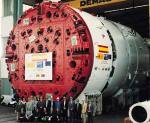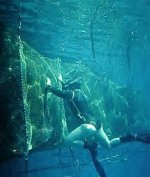Dead Sea Power Project
GREEN ENERGY: The Dead Sea Power Project (DSPP) is a tunnel and hydropower project that can produce 1500 to 2500 megawatts of clean and renewable electric energy. The value of such electric energy will be maximized by power generation during peak demand times. Planned operation of the project can fill the Dead Sea to the desired level within seven years of operation; after that, the continued operation of the hydropower plant will be enabled by the development of additional desalination capacity to supply the water needs of the region.
SAVING THE DEAD SEA AND IMPROVING THE ENVIRONMENT: Over a period of seven years of planned operation, the DSPP will restore the Dead Sea to the desired level, and thereby reverse the erosion and subsistence that is presently destroying the area. In addition, the placement of a deep layer of Med Sea water on top of the Dead Sea will stop the overturn of water in the Dead Sea that brings noxious gases to the surface.
DESALINATED WATER: The planned annual supply of Med Sea water through the DSPP will be five billion cubic meters, which, after desalination (using distillation to remove ninety percent as potable water) can provide five hundred cubic meters per person per annum for eight million people. Maximum capacity of the project is for twelve billion cubic meters annual flow, which would provide enough water for twenty million people if suitable desalination capacity should be developed. Desalination plants can be placed on the Jordanian and Israeli sides of the Dead Sea and can be powered by electricity from (i) DSPP, (ii) gas fired co-generation units and (iii) wind turbines on top of the mountains in Jordan. Such sources of electricity can also be used to pump seawater into reservoirs on top of the mountains, which in turn can be utilized, on demand, for desalination and electric power generation as needed.
DEVELOPMENT IN THE NEGEV AND THE JORDAN VALLEY: Desalination plants can provide water for potash mining operations and for aquiculture and agriculture. Desalinated water designated for irrigation of crops can be run through ponds for the production of fresh water fish and prawns. Med Sea water from the surface layer of the Dead Sea can be used for production of Sea Bass and Bream, and high value seaweed.
RESERVOIR LAKE: The daily tunnel flow will be stored in a reservoir in the upper seabed formed when the Dead Sea was the same level as the Med Sea. This area is deep clay, and very suitable for a reservoir site. A desalination plant and towns can be located near this lake.
JORDAN RIVER RESTORATION: Five hundred million cubic meters annually is required to provide the water needed to restore the Jordan River. Desalinated water from a desalination plant on the north shore of the Dead Sea can be utilized for this purpose. Efforts should be undertaken to get donor nations to fund, through the World Bank, the capital investment for this project. This should be a major project of the Economic Corridor peace plan. This would enable a huge increase in agriculture and industry in the valley, and provide needed jobs for the area.
TIME IS OF THE ESSENCE: The environmental and other needs are urgent. DSPP can be planned within two years, and constructed within seven years, after receiving the necessary approvals from the involved governments. Please work to bring the benefits of DSPP to the Dead Sea and the surrounding region by sharing this information with all who may have an interest.






